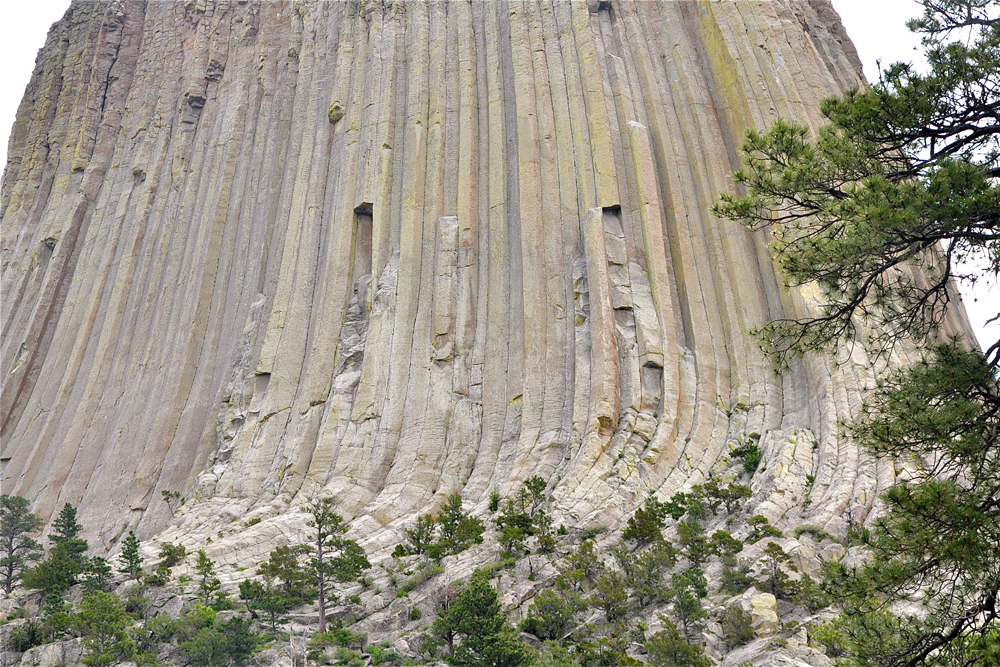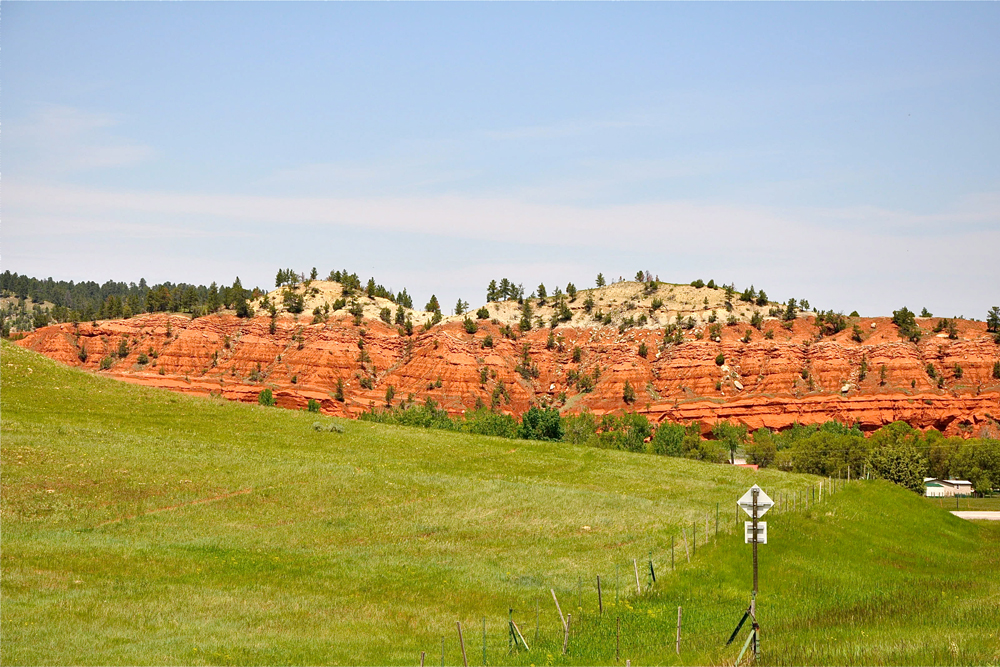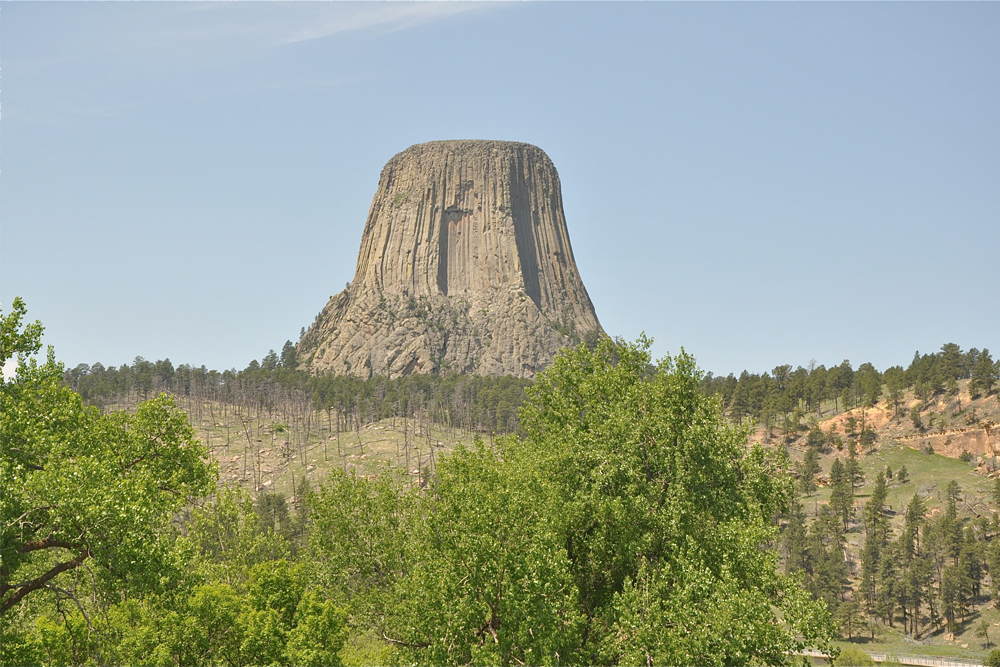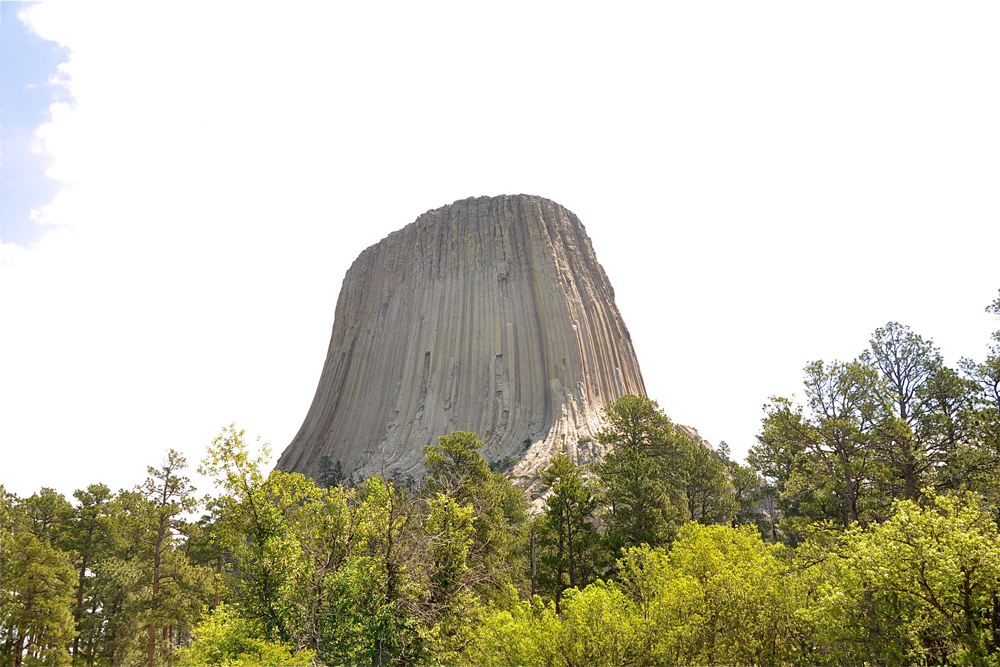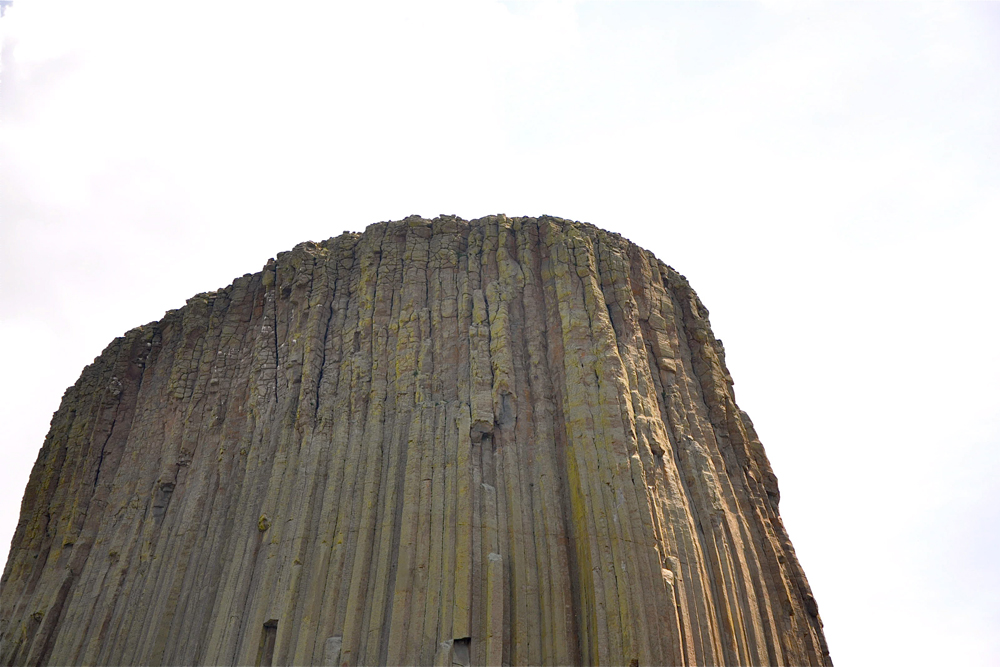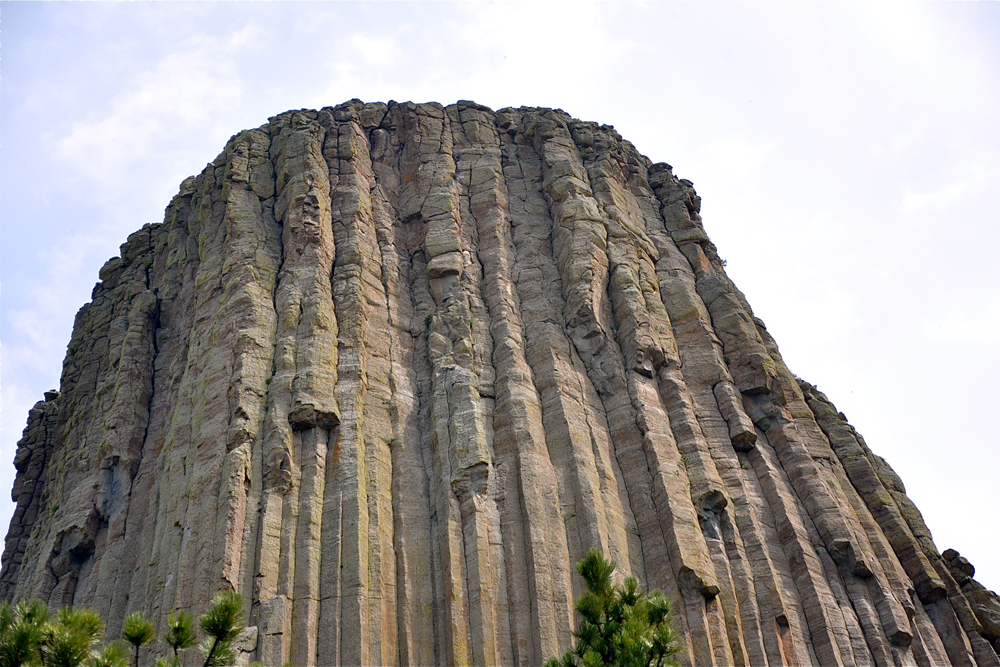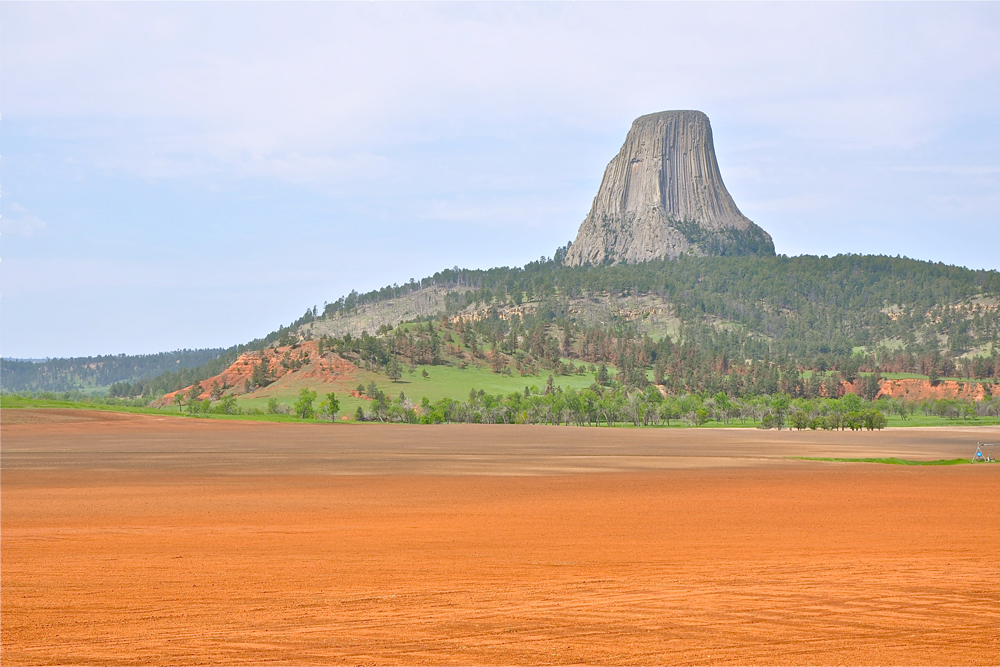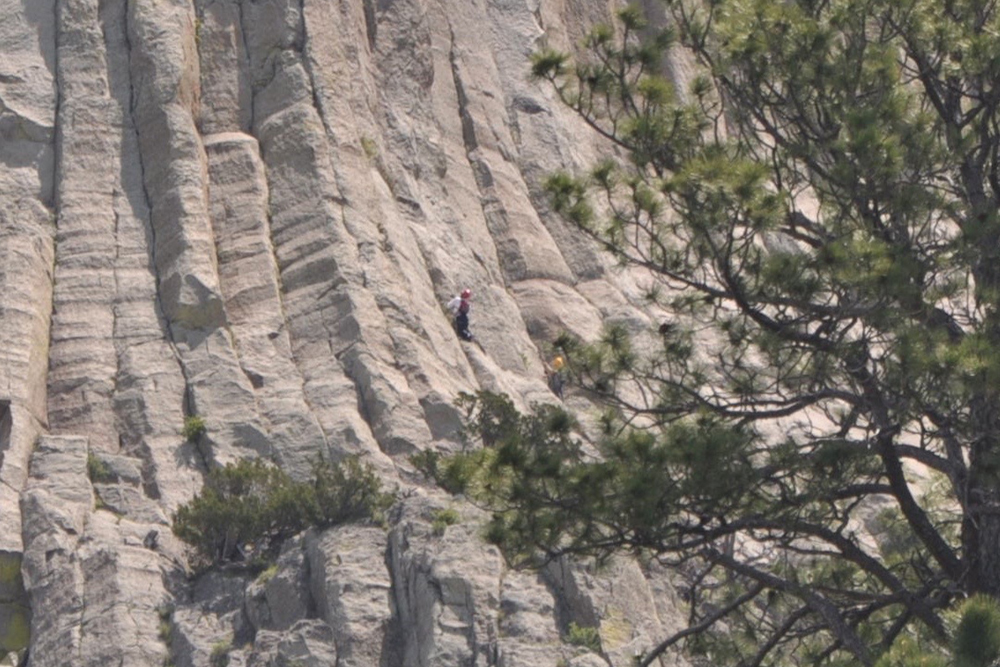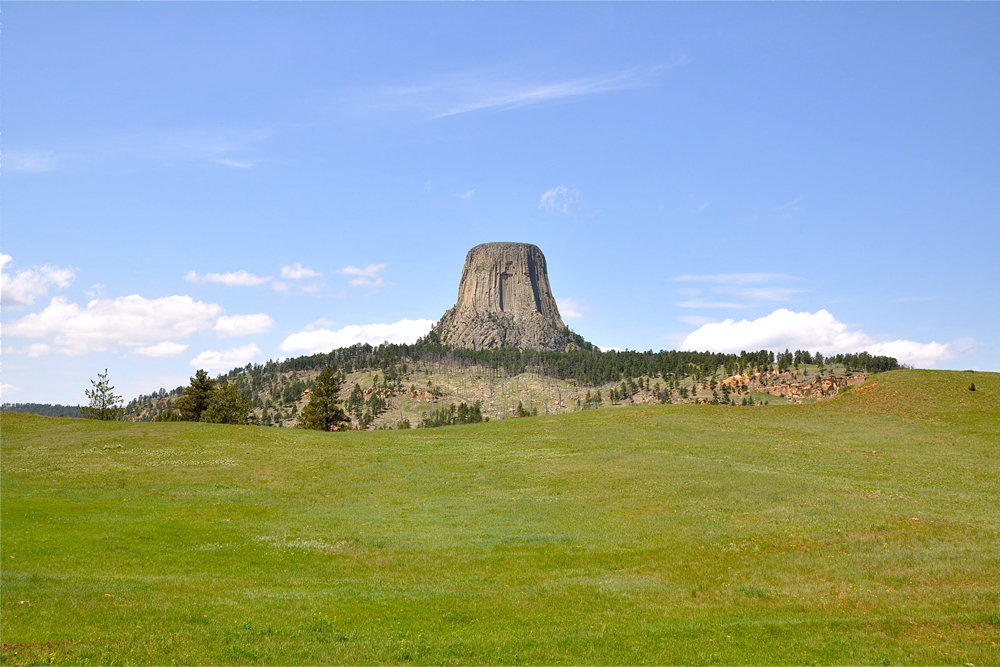Devils Tower: See Photos of Wyoming's Unique Rock Formation
In the Fourche River Valley in northeastern Wyoming, an unmistakeable and unique geological wonder arises from the desolate, high plains landscape.
Telltale formation
Here, an intrusion of the igneous rock phonolite porphyry formed between the layers of sedimentary rock, resulting in what is known today as Devils Tower. (Credit: Linda & Dr Dick Buscher)
Natural forces
The igneous rock phonolite porphyry tends to be a gray to greenish-gray rock infused with crystals of white feldspar. As cooling occurred, this igneous rock formed in a shape best described as hexagonal columns. Further cooling resulted in the development of vertical cracks as the massive structure shrank horizontally in volume. (Credit: Linda & Dr Dick Buscher)
Specific characteristics
Most geologists today believe that Devils Tower actually formed deep underground during the time that the ancient seas of the Triassic period covered this land, some 225 million to 196 million years ago. The layers of sediment laid down here created a general landscape of dark red sandstone and maroon siltstone and is known to geologists as the Spearfish Formation. (Credit: Linda & Dr Dick Buscher)
Get the world’s most fascinating discoveries delivered straight to your inbox.
Curious feature
However, geologists cannot agree as to exactly how the process that formed Devils Tower took place, or even if the igneous magma that formed the tower ever reached the surface of the Earth in ancient times. (Credit: Linda & Dr Dick Buscher)
Preliminary theories
Early in the 20th century, geologists' best theory suggested that Devils Tower was laccolith. A laccolith is a dome or mushroomlike structure formed as the result of a sheet intrusion of magma between two layers of sedimentary rock. (Credit: Linda & Dr Dick Buscher)
Other ideas
Other geologists have speculated that Devils Tower was actually a volcanic plug. This theory seems plausible except for the fact that there is no evidence of volcanic activity in the surrounding landscape. Some have suggested that erosion has carried away all evidence of volcanic activity, leaving only Devils Tower. (Credit: Linda & Dr Dick Buscher)
Modern thoughts
Today, many geologists suggest that Devils Tower is simply a stock — a body of igneous rock that formed and cooled underground. Over the years, the forces of erosion have exposed less than 40 square miles (100 square kilometers) of the once-buried stock. (Credit: Linda & Dr Dick Buscher)
Strange geologic wonder
The summit of Devils Tower rises some 5,112 feet (1,588 meters) above sea level. It rises some 867 feet (264 m) above the surrounding prairie. The tower is nearly 1,000 feet (305 m) in diameter at the base, and some 275 feet (84 m) in diameter across the top. (Credit: Linda & Dr Dick Buscher)
Holy ground
Devils Tower is a sacred site to several Native American tribes, including the Arapaho, Crow, Lakota, Cheyenne, Kiowa and Shoshone. Traditional ceremonies still occur here. The tower is called "Bear's Tipi" by the Arapaho, "Bear’s Lodge" by the Cheyenne and "Tree Rock" by the Kiowa. Kiowa and Lakota tribal legend holds that the vertical marks found on the tower are a result of a giant bear's claws trying to climb the tower to reach a group of Indian maidens fleeing to the tower's summit. When the tower touched the sky, the seven maidens became the stars of the constellation Pleiades. (Credit: Linda & Dr Dick Buscher)
Language barriers
In 1875 a United States Army scientific expedition entered this land under the command of Col. Richard Dodge. Dodge reported that the local tribes called the tower "The Bad God's Tower," which is believed today to have been a mistranslation of the local Native American name. Government surveyors started writing "Devils Tower" on their maps and the name remains today. (Credit: Linda & Dr Dick Buscher)
The first of many
The first caucasians to come upon Devils Tower were the members of the 1859 expedition to Yellowstone led by Captain William F. Raynolds. The United States Congress recognized the uniqueness of Devils Tower as early as 1892 and designated Devils Tower in 1906 to be the first National Monument of the United States of America. (Credit: Linda & Dr Dick Buscher)
Tourist attraction
Today, Devils Tower National Monument is a popular destination for both tourists and rock climbers. In fact, the tower has become the most popular rock climbing destination in this region. Native American tribes consider climbing the tower to be a desecration of their holy site, so there is a ongoing debate as to the proper use and care of this magnificent geological structure. (Credit: Linda & Dr Dick Buscher)
Recognizable structure
Americans have long been drawn to the distinctive shape and features of Devils Tower. Today, its unique characteristics draw the attention and interest of people from around world. Even the moviemakers of Hollywood got into the act of enhancing the lore of Devils Tower when they chose this special geological structure for the setting of the 1977 movie "Close Encounters of the Third Kind."
Follow Live Science @livescience, Facebook & Google+.



